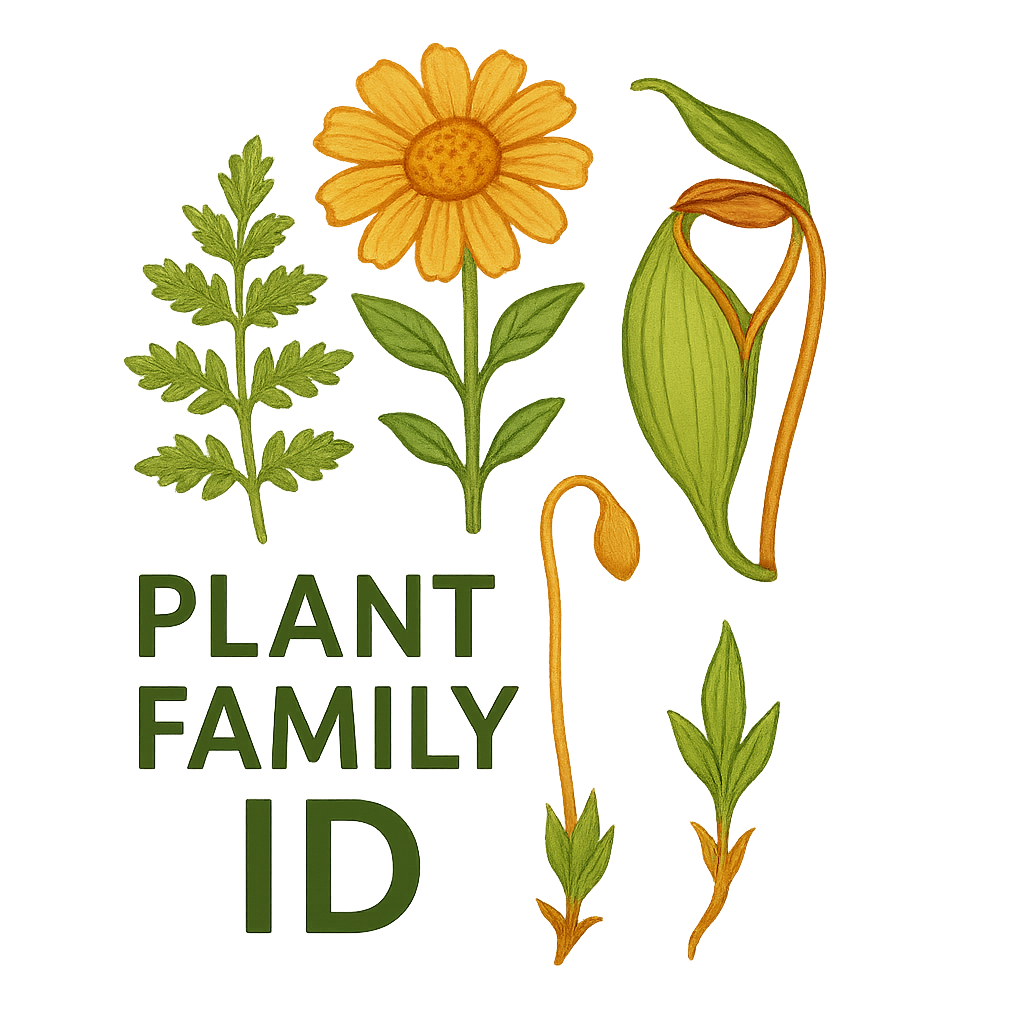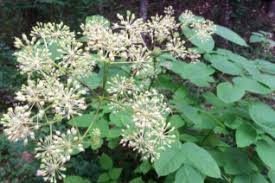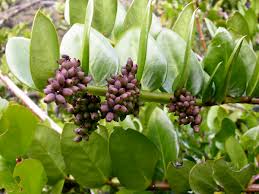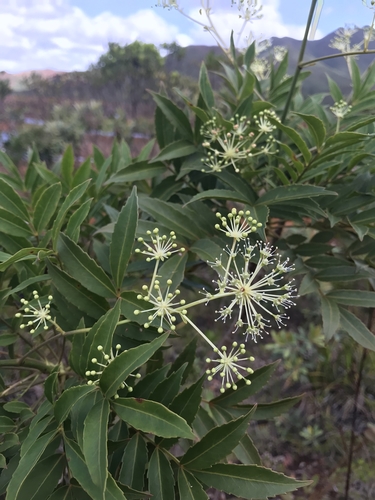Pittosporaceae
The Pittosporaceae family, commonly known as the Pittosporum Family or Cheesewood Family, belongs to the order Apiales within the Asterid clade of eudicots. This family comprises about 9-11 genera and 200-250 species of evergreen shrubs, trees, and woody vines (lianas). Pittosporaceae is primarily distributed in the Old World tropics and subtropics, with major centers of diversity in Australasia, but also extending into Africa, Asia, and various Pacific islands. Many species are known for their often fragrant flowers and resinous bark or fruits.
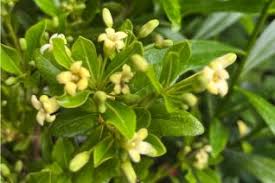
Overview
Pittosporaceae is a family of primarily woody plants recognized by their typically simple, alternate, leathery leaves lacking stipules, often resinous bark, and usually 5-parted flowers. The flowers are frequently fragrant and have petals that are often pressed together at the base, forming a tube. The fruit is typically a capsule or berry, often containing seeds embedded in a sticky, resinous pulp.
The family's distribution is centered in Australia and surrounding regions (Malesia, New Caledonia, New Zealand), but extends westward to Africa and eastward across the Pacific. The largest genus, Pittosporum, accounts for the majority of species and has the widest distribution. Several species, particularly within Pittosporum, are widely cultivated as ornamental shrubs or hedge plants in temperate and subtropical regions worldwide due to their attractive evergreen foliage and fragrant flowers (e.g., P. tobira, P. tenuifolium).
Phylogenetically, Pittosporaceae is placed within the Apiales order, where it forms part of the core group alongside the large families Apiaceae (Carrot family) and Araliaceae (Ginseng family).
Quick Facts
- Scientific Name: Pittosporaceae
- Common Name: Pittosporum Family, Cheesewood Family
- Number of Genera: Approximately 9-11
- Number of Species: Approximately 200-250
- Distribution: Old World Tropics & Subtropics: Australasia (center of diversity), Africa, Asia, Pacific Islands.
- Evolutionary Group: Eudicots - Asterids - Campanulids - Apiales
Key Characteristics
Growth Form and Habit
Plants are evergreen shrubs, trees, or woody vines (lianas, e.g., Billardiera). Bark often contains prominent resin canals and may be aromatic or bitter when cut.
Leaves
Leaves are usually alternate and spiral, though sometimes opposite or appearing whorled at branch tips. They are simple, with margins typically entire (smooth), but occasionally lobed or toothed, especially in juvenile stages. Leaves are often leathery (coriaceous) in texture. Stipules are absent.
Inflorescence
Flowers are typically arranged in terminal or axillary cymes, corymbs, or panicles; sometimes flowers are solitary or in small clusters.
Flowers
Flowers are usually actinomorphic (radially symmetrical), mostly bisexual (though sometimes functionally unisexual), and typically 5-parted (pentamerous), rarely 4-parted. Key features include:
- Calyx: Consists of 5 (rarely 4) sepals, which are usually free or only slightly fused at the very base, often small.
- Corolla: Consists of 5 (rarely 4) petals. Petals are free but often connivent (pressed closely together) at the base, forming a floral tube, with the upper portions spreading outwards. Petals are often clawed (narrowed at the base). Colors range from white and yellow to blue, purple, or reddish. Flowers are frequently fragrant.
- Androecium: Features 5 (rarely 4) stamens, alternating with the petals. Filaments are free, attached near the base of the ovary or to a nectar disc. Anthers typically dehisce via longitudinal slits.
- Gynoecium: Features a superior ovary composed of 2(-5) fused carpels. The ovary is usually 2-locular with axile placentation or sometimes 1-locular with parietal placentation. Ovules number from few to many per locule. The style is simple, with a capitate or slightly lobed stigma. A nectar disc is often present at the base of the ovary.
Fruits and Seeds
The fruit is typically a leathery or woody loculicidal capsule that splits open to reveal the seeds (e.g., Pittosporum, Hymenosporum), or sometimes a fleshy berry (e.g., Billardiera). Seeds are few to many and are often embedded in or covered by a sticky, viscous, or resinous pulp, which likely aids in dispersal (possibly by birds or adhesion).
Chemical Characteristics
The family is known for producing resins and essential oils (contributing to fragrance). Triterpenoid saponins are also common. Some species may contain cyanogenic glycosides.
Field Identification
Identifying Pittosporaceae involves looking for a combination of vegetative and reproductive traits, particularly within their native range:
Primary Identification Features
- Habit: Evergreen shrubs, trees, or woody vines.
- Leaves: Usually alternate, simple, entire, often leathery, no stipules.
- Bark/Resin: Often contains resin canals (may be aromatic or bitter if cut).
- Flowers: Usually 5-parted (5 sepals, 5 petals, 5 stamens), actinomorphic, often fragrant. Petals frequently connivent at base forming a tube.
- Ovary: Superior.
- Fruit: Typically a capsule (woody/leathery) or sometimes a berry.
- Seeds: Often embedded in sticky/resinous pulp.
- Distribution: Primarily Old World / Australasia.
Seasonal Identification Tips
- The often fragrant flowers are a key feature during blooming season (times vary by species and location).
- Mature fruits (capsules splitting open or fleshy berries) and the sticky seeds within are diagnostic when present.
- The combination of alternate, simple, entire, exstipulate, leathery leaves on a woody plant is a useful vegetative clue.
Common Confusion Points
Distinguishing Pittosporaceae from other families:
- Apiaceae (Carrot Family) & Araliaceae (Ginseng Family): Also in Apiales, but Apiaceae are mostly herbs with compound leaves and schizocarp fruits, while Araliaceae often have compound leaves, umbellate inflorescences, and inferior ovaries. Pittosporaceae are woody with simple leaves and superior ovaries.
- Myrsinaceae / Primulaceae sensu lato: Can include shrubs/trees with simple alternate leaves, but often have glandular dots on leaves, different flower structure (petals often fused more extensively, different stamen arrangement), and often drupaceous fruits.
- Other woody families with simple alternate leaves (e.g., Aquifoliaceae, Celastraceae, Ericaceae): Differ in presence/absence of stipules, flower part numbers, petal fusion, ovary position (inferior in some Ericaceae), fruit types, and seed characteristics.
- The combination of alternate simple exstipulate leaves, resin canals, 5-parted flowers with often connivent petals, superior ovary, and capsule/berry fruit with sticky seeds is characteristic of Pittosporaceae.
Field Guide Quick Reference (Pittosporaceae)
Look For:
- Shrub, tree, or vine (Old World/Australasia)
- Leaves: Usually alternate, simple, entire, leathery, no stipules
- Often resinous bark
- Flowers: Usually 5-parted, often fragrant
- Petals often forming tube at base
- Ovary: Superior
- Fruit: Capsule or Berry
- Seeds often in sticky pulp
Key Distinctions:
- Woody habit + simple leaves (vs. herbaceous/compound in Apiaceae)
- Superior ovary (vs. inferior in Araliaceae)
- No stipules
- Capsule/berry fruit with sticky seeds
- Different flower structure than Myrsinaceae/Primulaceae
Notable Examples
Pittosporaceae includes several well-known genera, especially in horticulture and its native regions:

Pittosporum spp.
Pittosporums, Cheesewoods
The largest genus (~150-200 species) comprising shrubs and small trees, distributed from Africa through Asia to Australasia and the Pacific. Many species, like P. tobira (Japanese Pittosporum) and P. tenuifolium (Kohuhu), are popular ornamental hedge plants valued for their dense foliage and fragrant flowers.

Hymenosporum flavum
Native Frangipani
A monotypic genus native to rainforests of eastern Australia. It is a slender tree grown for its highly fragrant, tubular yellow flowers that appear in spring. The fruit is a flat capsule.

Billardiera spp. (incl. Sollya)
Apple Berries, Bluebell Creepers
A genus of mostly climbing vines or small shrubs endemic to Australia. They are known for their often bell-shaped flowers (yellow, blue, white) and fleshy berry fruits, which are edible in some species (e.g., B. scandens). Includes species formerly in Sollya (like S. heterophylla, Australian Bluebell Creeper).

Sollya heterophylla (now Billardiera heterophylla)
Australian Bluebell Creeper
A popular garden climber (often considered invasive in some areas) known for its clusters of nodding, bright blue, bell-shaped flowers. Now generally included within the genus Billardiera.
Phylogeny and Classification
Pittosporaceae is placed within the order Apiales, belonging to the Campanulid clade of Asterids. Molecular phylogenetics confirms its position as one of the core families within this order.
Apiales is characterized by a tendency towards production of certain secondary metabolites (like polyacetylenes, though less prominent in Pittosporaceae) and often features flowers arranged in umbel-like structures (though typically cymose/paniculate in Pittosporaceae). Pittosporaceae is consistently resolved as being closely related to the large families Apiaceae (Carrot family) and Araliaceae (Ginseng family), along with smaller families like Griseliniaceae and Myodocarpaceae. Pittosporaceae represents a primarily woody lineage within an order that also contains the vast herbaceous diversity of Apiaceae.
Position in Plant Phylogeny
- Kingdom: Plantae
- Clade: Angiosperms (Flowering plants)
- Clade: Eudicots
- Clade: Asterids
- Clade: Campanulids
- Order: Apiales
- Family: Pittosporaceae
Evolutionary Significance
Pittosporaceae is significant in evolutionary studies:
- It represents a predominantly woody lineage within the Apiales order, contrasting with the largely herbaceous Apiaceae, offering insights into habit evolution within the order.
- Its center of diversity in Australasia suggests ancient origins, possibly linked to Gondwana, with subsequent dispersal events across the Old World.
- The family exhibits successful radiation into diverse habitats, from rainforests to drier sclerophyll vegetation.
- Several genera, especially Pittosporum, are widely used in horticulture, demonstrating successful adaptation and human selection.
- Features like sticky seeds represent interesting adaptations for seed dispersal.
